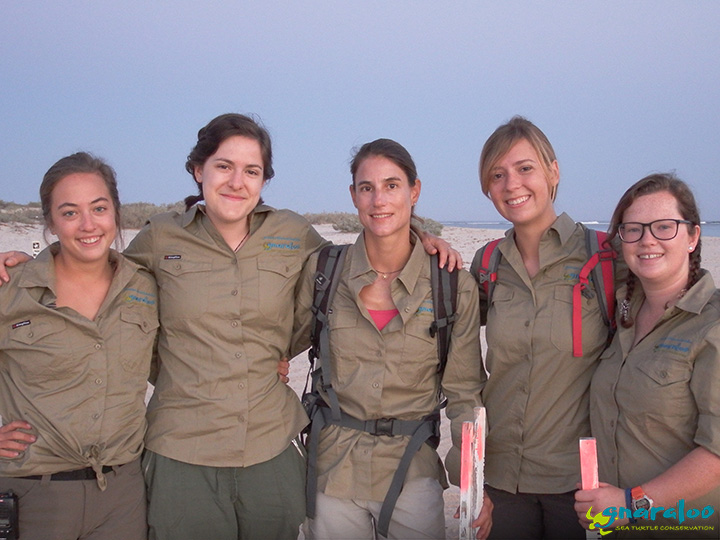Female loggerhead turtles usually spend the length of the nesting season (November to February) either…

Program Assistant, Simone Bosshard, on the first survey BP7-BP9. Credit: Heather Shipp
First sea turtle nesting survey of the season
It’s November 1st, which means that today is our first day of sea turtle nesting survey! After two weeks of training, the whole team was excited to start the season off with a bang.
With our alarms set for a bright and early 04:30, we woke to the sounds of the ocean in our ears and the view of the milky-way filling the sky. We ate breakfast by candlelight and sleepily made our way over to our temporary project vehicle, who we have affectionately named Russell. Five o’clock ticked around as we gave Russell his daily once over, checking his oil levels and tyre pressure, ensuring he was equipped with the essential emergency items – just in case. I think you’d all be surprised by now if we actually made it through a day without anything bad happening!
Driving along the bumpy dirt road towards the beach, we passed a few very sleepy kangaroos that sluggishly crawled away from the side of the road, before reaching our first stop, Gnaraloo Bay North (GBN). The first few rays of light started peaking over the horizon, as we looked out across our new office for the next 120 days. We watched for a few minutes as the waves lapped up onto the beach in front of us and the Gnaraloo Bay Rookery (GBR) stretched out for as far as our eyes could see.

We decided to split into groups to tackle the two different sections of the beach. Heather and Simone opted to walk the northern section from Beach Point (BP7 to BP9), whilst the rest of us surveyed along the southerly section (GBN to BP7). Heather and Simone drove on further to their start point (BP7) whilst Team Tess (Tess C. and Tess D.) and I meandered along our section of the beach towards them looking out for tracks. As both groups continued along the white sands, Team Tess and I developed our expertise identifying kangaroo (Macropus robustus) tracks as they seem to love coming down for a play in ocean, whilst Heather and Simone identified different species of sea-birds including Pied Oystercatchers (Haematopus longirostris), Silver Gulls (Chroicocephalus novaehollaniae) and Grey-Tailed Tattlers (Tringe brevipes). We made a note of this, so we could add many more species to our ever-growing team species list upon our arrival back at the station. Unfortunately, neither team found any emerging turtle tracks to start off our nesting activity count but we’re hopeful that this will change over the next few days.

Shortly before reaching our end point at BP7, Team Tess and I were surprised to see a small object sitting further along the beach. Approaching slowly, it became clear that the object was a small juvenile green turtle (Chelonia mydas) which must have died within the few days previously. The scutes were starting to peel away from the carapace and its body had started to mummify under the intense Australian sun. During our training we learned that whenever stranded sea turtles are found along beaches, it is beneficial to collect morphological data on their size and condition for research scientists and organisations to analyse. Stranding data on all marine mammals and turtles can give researchers an idea on how many individuals are washing up along the coast each year and the threats they face in their natural habitat.
Upon finding the carcass, we took several photos from different angles to show the condition of the individual. We filled out a WA marine turtle stranding form by using the Department of Biodiversity, Conservation and Attractions (DBCA) standings protocol to confirm the species as a green turtle – 4 costal scutes with a small head and one pair of prefrontal scales. We noted its mummified condition and the unknown sex. Next, we took measurements of the length of the carapace, from where the scutes meet the skin behind the head to the notch at the back of the carapace; the width of the carapace across the widest point and the tail length going back to the tip of the tail from the edge of the carapace. All of these measurements and records give scientists the ability to identify the approximate age of the individual based on its size and how the individual died.
All in all, even though we didn’t find any turtle tracks, our first survey was successful, as we learned how to collect stranding data from the turtle carcass whilst also enjoying identifying the local fauna along the beach. We are hopeful that the turtles will start nesting over the next week as the temperatures start to heat up with the onset of summer. Only 119 more days to go!
Written by Megan Soulsby



